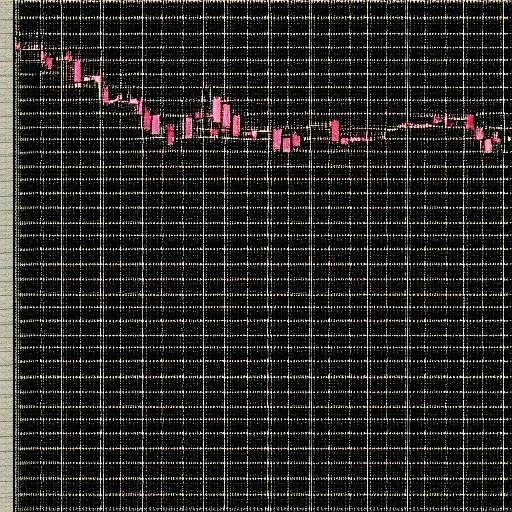In the bustling, high-stakes world of global finance, where fortunes are made and lost in the blink of an eye, the foreign exchange (forex) market has long been perceived as an exclusive domain for institutional giants and seasoned veterans․ Its sheer scale, with trillions of dollars exchanging hands daily, often intimidated aspiring traders, creating a formidable barrier to entry․ Yet, a quiet revolution has been unfolding, democratizing access and empowering a new generation of investors․ This seismic shift is largely driven by an often-underestimated, yet incredibly effective, concept: the mini position in forex․
For decades, the standard lot, representing 100,000 units of currency, was the gateway to forex trading, demanding substantial capital and a robust risk appetite․ This traditional structure inherently limited participation, relegating countless individuals with valuable market insights but constrained resources to the sidelines․ However, the advent of the mini position has dramatically altered this landscape, providing a crucial stepping stone for those eager to navigate the vibrant currency markets without risking their entire financial future․ By integrating insights from technological advancements and a deeper understanding of trader needs, brokers have embraced this flexible option, proving that significant impact doesn’t always require monumental scale․
Understanding Forex Lot Sizes: A Comparative Overview
To fully appreciate the transformative power of the mini position, it’s essential to understand its place within the broader spectrum of forex lot sizes․ This table outlines the key distinctions, offering clarity for both burgeoning and experienced traders․
| Lot Type | Units of Base Currency | Approximate Value per Pip (for USD base pair) | Typical Margin Requirement (Example) | Ideal For |
|---|---|---|---|---|
| Standard Lot | 100,000 units | $10․00 | $1,000 — $2,000+ | Experienced Traders, Large Capital |
| Mini Lot (Mini Position) | 10,000 units | $1․00 | $100 — $200+ | Beginners, Intermediate Traders, Risk Management |
| Micro Lot | 1,000 units | $0․10 | $10 ー $20+ | Absolute Beginners, Testing Strategies |
| Nano Lot | 100 units | $0․01 | $1 ー $2+ | Strategy Backtesting, Ultra-Low Risk |
For further reference on forex trading fundamentals, visit Investopedia’s Forex Guide․
The Strategic Advantages of Mini Lots: Risk Management Redefined
At its core, a mini position represents 10,000 units of the base currency in a forex pair․ This means that if you’re trading EUR/USD, a mini lot would be 10,000 Euros․ Crucially, the profit or loss per pip (percentage in point) is also scaled down proportionally․ For a USD-quoted pair, a mini lot typically translates to a $1 movement per pip, a stark contrast to the $10 per pip swing associated with a standard lot․ This reduction is not merely arithmetic; it’s a profound shift in risk management, offering traders unprecedented control․
This smaller unit size acts as a vital buffer, allowing new traders to gain hands-on experience without subjecting their capital to the extreme volatility that larger positions entail․ Imagine learning to drive in a race car versus a compact sedan; the mini lot is the sedan, forgiving errors and building confidence․ “The mini lot isn’t just about smaller capital; it’s about intelligent capital deployment,” asserts Dr․ Evelyn Reed, a renowned financial economist specializing in retail trading dynamics․ “It permits nuanced position sizing, which is the bedrock of sustainable trading success․ Traders can truly align their risk exposure with their evolving skill sets and market convictions․”
Empowering Accessibility and Fostering Growth
The impact of mini positions extends far beyond mere risk mitigation․ They are fundamentally reshaping who can participate in the forex market․ Aspiring traders, who might only have a few hundred or a few thousand dollars to allocate, can now realistically open an account and engage in live trading․ This accessibility fuels a virtuous cycle: more participants lead to greater liquidity, more diverse trading strategies, and ultimately, a more robust and dynamic market․ Leading brokers, from IG Markets to OANDA, have enthusiastically embraced mini and even micro lots, recognizing their role in attracting and retaining a broader client base․
Furthermore, mini positions are incredibly valuable for experienced traders too․ They offer unparalleled flexibility for testing new strategies, fine-tuning existing ones, or diversifying risk across multiple currency pairs without over-committing․ A seasoned professional might use mini lots to scale into a larger position gradually, or to hedge existing trades with precision․ This granular control over exposure is a powerful tool in any trader’s arsenal, allowing for sophisticated tactical maneuvers that were previously impractical with only standard lot options․
The Future is Flexible: A Persuasive Outlook
Looking ahead, the prominence of the mini position in forex is only poised to grow․ As technology continues to lower barriers and financial education becomes more widespread, the demand for flexible, risk-adjusted trading options will intensify․ The shift towards smaller, more manageable trading units reflects a broader trend towards personalization and empowerment in financial services․ We are moving away from a one-size-fits-all model to an ecosystem where individual traders can tailor their market engagement to their precise circumstances and comfort levels․
This optimistic trajectory suggests a future where forex trading is not just for the elite, but for anyone willing to learn and apply disciplined strategies․ The mini position is more than just a smaller trade size; it’s a testament to innovation, an enabler of financial literacy, and a powerful catalyst for individual wealth creation․ By embracing this accessible entry point, countless individuals are now confidently charting their course through the captivating currents of the global currency markets, proving that sometimes, the greatest power lies in the smallest increments․






